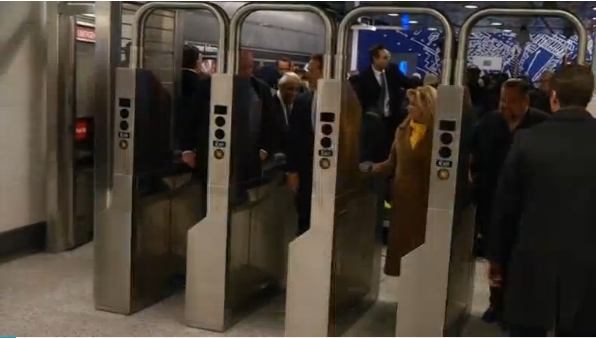
NEW YORK,United States (Reuters) – Three new subway stations along Manhattan’s Second Avenue will finally open on New Year’s Day, New York Governor Andrew Cuomo said on Thursday (December 22), 10 years after construction started and decades after the seemingly interminable project was first proposed.
“There’s much talk about the deadline and the deadline is January 1, and we are committed to that deadline and the train is going to run if we have to push the train down the tracks. That train is going to run on January 1,” he said during a viewing of the 96th St station.
The idea of a Second Avenue subway has fired up the imagination of New Yorkers for a century, as commuters along Manhattan’s transit-starved East Side dreamed of an easier way to travel up and down the densely populated borough.
But over time, the line has achieved near-mythical status for the snail’s pace at which work has proceeded. First proposed in the 1920s and canceled three times for lack of funds despite three separate ground-breaking, the line will replace elevated trains that ran down the East Side until they were torn down in the 1940s and 1950s.
Construction of the initial section, which includes three stations, will wrap up on Jan. 1, about 10 years after it started. The opening is three years later than the estimate when work began in 2007.
The initial extension will serve an estimated 200,000 people daily, though the opening may carry more significance as the end of a multi-generational wait.
“Along the way, there was a Second Avenue elevated line and a Third Avenue elevated line that they took down in the ’40s because they were going to build the subway on Second Avenue — except they forgot to build the subway on Second Avenue,” the governor explained.
“You took down the elevated lines and now you had all that volume on the East Side going to Lexington Avenue and that’s why the 4, 5 and the 6 are the most heavily travelled lines in the world because of the fact that the Second Avenue subway never materialized.”
Cuomo has put an emphasis on big construction projects, including a multi-billion dollar replacement of the Tappan Zee Bridge across the Hudson River north of New York City and major renovations at LaGuardia Airport.
The opening of the subway extension coincides with the incoming administration of President-elect Donald Trump, who has pledged to jump-start infrastructure projects through tax credits.
Though the subway project’s first phase has a price tag of $4.5 billion, it is decidedly modest in scale. Three stations along Second Avenue will extend the existing Q line north by 2 miles (3.2 km).
Later sections will complete Manhattan’s first new line since 1936. The new T line will run 8.5 miles (13.7 km) between the Harlem and Wall Street districts. Officials have not ventured an estimate for completion of the full T line.
Last year, work crews finished a $2.4 billion extension of the subway’s 7 line to 11th Avenue, a project aimed at revitalizing a long-neglected neighborhood on the West Side.
Cuomo, an ambitious Democrat who has been mentioned as a possible presidential candidate, has taken on a visible role in pushing the subway project along. He has held weekly meetings with his aides and contractors.
A ceremonial ride is scheduled for Dec. 31, to be followed the next day by regular service. The standard fare is $2.75, although the Metropolitan Transportation Authority has proposed an increase to $3.







